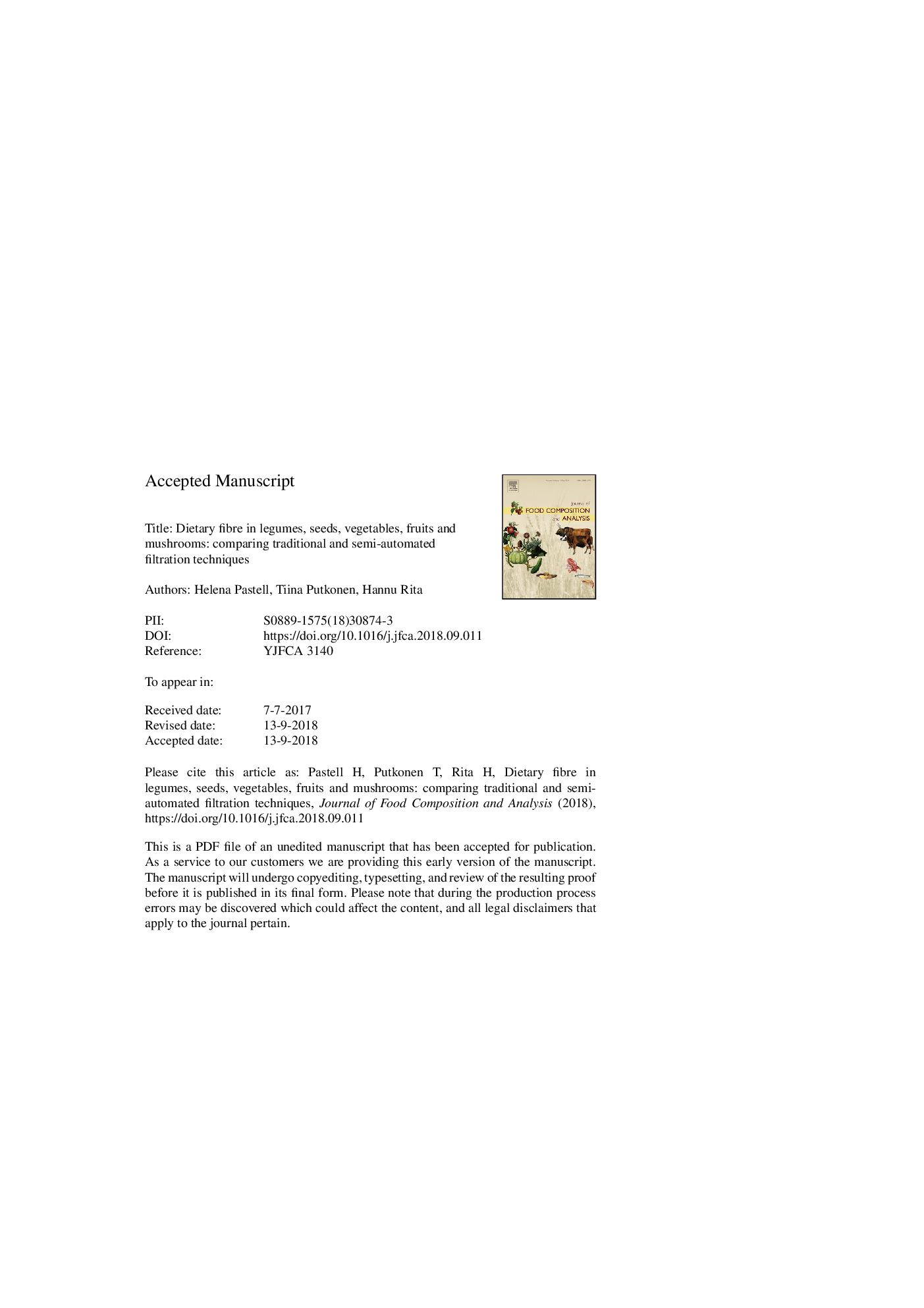| Article ID | Journal | Published Year | Pages | File Type |
|---|---|---|---|---|
| 10211266 | Journal of Food Composition and Analysis | 2019 | 24 Pages |
Abstract
The method AOAC 2011.25 was used to analyze all the dietary fibre (DF) components included in the latest definition by the Codex Alimentarius Commission (2009). The traditional filtration technique, described in the method AOAC 2011.25, was compared with a new semi-automated filtration technique using Fibertec⢠1023 system. For the comparisons, a statistical similarity approach was chosen to evaluate the results of six food matrixes (wheat flour, edible boletus, strawberry, tomato, green pea and horse radish). The total DF contents of the tested matrixes fit within 16% tightest data-induced similarity limit of the manual mean, with one exception (strawberry; 30%). Thus, it was concluded that both techniques are suitable for use with the method AOAC 2011.25, and therefore either technique was used to analyze a wide selection of legumes, seeds, vegetables, fruits and mushrooms (44 foods). Seeds were excellent sources of total DF, as well as water-insoluble (IDF) and water-soluble (SDFP) polysaccharides. A substantial amount of oligosaccharides (SDFS) was found in red onions. Generally, the DF contents were higher in this study than in earlier studies. Higher DF results can be partially explained by the more effective analytical method, and partly by changed varieties.
Related Topics
Physical Sciences and Engineering
Chemistry
Analytical Chemistry
Authors
Helena Pastell, Tiina Putkonen, Hannu Rita,
